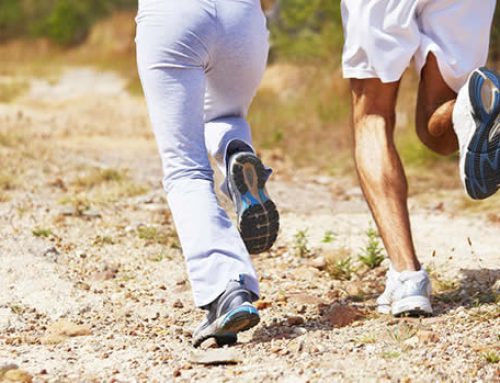We know that the prescription for leading a long, productive lifestyle includes:
- Proper nutrition
- Movement
- Sleep and
- Continual body maintenance and observation
These points are primary components for increased life expectancy and can have a positive effect on many different aspects of your life.
If the world was perfect you would have started preparing for your 80’s in your 20’s and through your 30’s, 40’s and 50’s so you would avoid problems further down the line. When you reach your 50’s you are half way there, hopefully!
10 steps…in a perfect world
If the world was perfect:
1. You would have been running and weight training to build up your skeletal frame.
This would be a great way to reduce the possibility of having osteoporosis.
2. You would have been tuning your taste buds to healthy eating. You would have:
- You would have made the switch from whole milk to skimmed and what would have seemed watery and vile would now taste refreshing and clean
- You would have moved away from fat-laden foods towards a healthier diet that consists of 65% carbohydrate, 25% fat and 10% protein.
- You would be increasing your hydration. Some fatigue and poor performance as we age, could be something as simple as chronic dehydration. Don’t trust your thirst reflex to let you know when it’s time to drink. It won’t kick in until you’ve lost about 2% of your bodyweight fluid. The older you are, the more you need to hydrate.
3. You would have been having a comprehensive physical testing:
- Weight check
- Blood-pressure check
- Stethoscope examination of heart and lung
- Stress test and resting electro-cardiogram
- Stool sample for occult blood
- Bone-density screening
- Complete blood analysis; HIV test; urinalysis; immunisation update for tetanus; plus, tests for kidney, liver, thyroid and pulmonary function.
- Women would have been continually testing their breasts and men testing their testicles.
Self-examination of breasts and testicles can reveal early warning signs and save lives. Eleven thousand men are killed by prostate cancer each year. Even though those that do strenuous exercise have a 25% lower incidence of prostate problems than sedentary men, 40 is the age to schedule a prostate examination.
Having early extensive physical examinations, establishes a medical baseline for future comparison. You need to do this, so you make your 80’s.
4. You would have been managing stress by learning to relax and exercise.
Stress peaks during your late 30s to early 40s. That’s when career, family and relationship pressure is greatest.
Stress has been linked to heart disease, high blood pressure, strokes, cancer and many other illnesses, so it’s vital to control it.
Exercise is one of the best ways to do this. Just three 20-30 minute work-outs a week will trigger the release of feel-good brain chemicals, loosen tense muscle, stabilise blood sugar, aid digestion and help dissipate frustration and aggression.
5. You would have been looking after your cardiac health in your 40’s
You would have had your cholesterol checked and paying attention to the levels of HDL (good cholesterol) and LDL (bad cholesterol) in your blood. The former should be above 35 and the latter below 130.
To calculate you overall heart disease risk, divide the total cholesterol by HDL level. The average risk factor is 4.5.
Men and women over 50 who carry at least one risk factor for cardiovascular disease can lower their chances of having a first heart attack by taking 80-325mg of aspirin daily. Researchers found risk reductions of 30-44% in separate studies. The aspirin works by thinning the blood and preventing clot formation. In addition to a regular running programme, it’s a good, cheap insurance.
Exercise and nutrition are the way to control these issues.
6. You would have been looking after all those niggling injuries
For aches, pains and muscle pulls that seemingly arise from nowhere and side-line you, it is now time for intelligent exercise. Begin each session with a five-minute walking warm up to ease stiffness. After a particularly tough work-out, take a day or two off so that your muscles can recover. Age demands more rest.
7. You would have been preparing for that mid-life crisis that can lead to depression.
This can happen at all the big 0’s, 30s, 40s, 50s, 60s and 70’s. Exercise is one of the best ways to lift sadness, restore joy and build confidence. It does this by stimulating the production of feel-good chemicals. The famed ‘runners-high’ is derived from endorphin, which is stimulated when you run, and which is one of eight morphine-like opiates produced by our bodies that are all stronger than the opium from the Chinese poppy plant.
8. You would have been exercising to improve your sex life.
Exercise promotes good circulation and, as good sex is all about good blood flow, it helps to avoid age-related sexual problems by strengthening your heart so that it can pump blood quicker. This scrubs your arteries of sticky cholesterol, so the thoroughfares remain clear, and reduces stress, which narrows blood vessels and redirects blood away from the genitals.
9. You would have been walking or running in your 50’s
Walking or running keeps fresh blood circulating through your veins, but there are safeguards that you must take. High-impact exercise can aggravate veins, so try to do more of your work-outs on softer surfaces like grass or woodland trails.
When the weather is cool, wear lycra tights to compress the veins and facilitate blood return to the heart. And after walking or running long distances always elevate your feet to further ease the pressure on overstrained veins.
One out of three men who suffer strokes are under 65, so cut down on the coffee and run regularly to protect yourself. The risk of stroke increases with each cup of coffee you drink and is more than double among those who consume three cups daily.
People who exercise vigorously enough to break a sweat at least once a week are about 20% less likely to have a stroke.
10. You would have been including resistant exercises in your fitness regime
Strength declines most steeply between the ages of 45 and 55, and while running and walking keeps leg muscles strong, it does little for the upper body.
If you haven’t been weight training regularly (20 minutes a day, three days a week), start doing so now. Traditional callisthenics such as push-ups, crunches and pull-ups, done before or after a run, are just as effective as gym equipment.
If the world is not perfect, there’s no time like the present
 If you have not been exercising, watching your nutrition or getting enough sleep, start NOW.
If you have not been exercising, watching your nutrition or getting enough sleep, start NOW.
The good news is, there is still time, even into your 80’s, to improve your health. Start with the full physical, get an action plan from a medical expert and start living a healthy life.
Then start introducing the 10 precautionary steps to minimise the ageing process.
As you get older your movement patterns have to change to fit into life’s demands. Each decade throws up different challenges to staying fit and healthy. At the very least try running or walking and definitely resistance exercise to either push back on or improve osteoporosis or bone erosion concerns.




